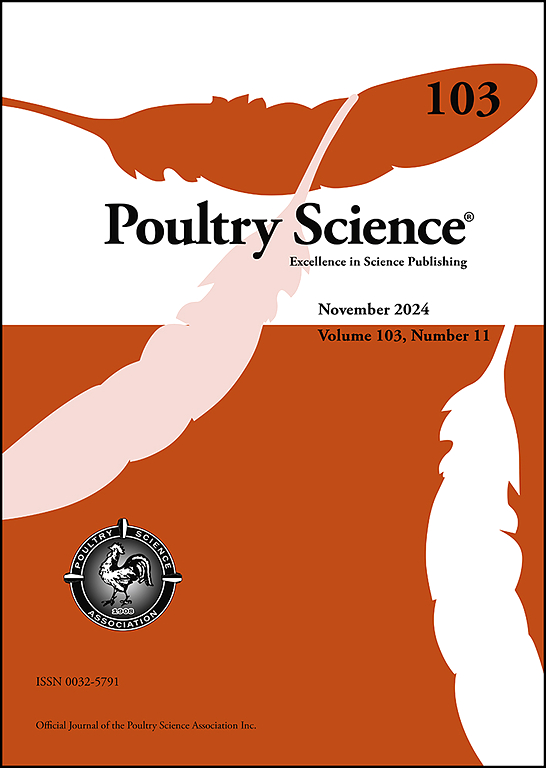Cytoskeletal signaling as a shared pathway for convergent genetic mechanisms underlying loss of flight in birds
IF 3.8
1区 农林科学
Q1 AGRICULTURE, DAIRY & ANIMAL SCIENCE
引用次数: 0
Abstract
Loss of flight in birds is an adaptive feature of evolutionary processes. Morphological and physiological differences are known among flightless bird species; however, the genetic mechanisms behind them are largely unexplored. Notably, wild birds and poultry that have lost flight owing to evolution and domestication, respectively, show phenotypic convergence, suggesting that different selective pressures through the same genetic pathways may cause loss of flight in birds; however, little is known about the genetic basis of this potential commonality. In this study, we obtained genomes of 28 wild bird and 15 duck species, and conducted comparative genomics and whole-genome resequencing analyses, respectively, to investigate the genetic basis underlying loss of flight in birds. The results of positive selection analysis using the genomic data of wild birds showed that 70 genes enriched in the cytoskeleton in muscle cells signaling pathway experienced strong positive selection, suggesting that this may be a key pathway leading to the loss of flight. Using the genomic data of domestic ducks for selective sweep analysis, we identified 139 candidate genes, among which FN1 and ANKRD1 were involved in the cytoskeleton in muscle cells signaling pathway; moreover, we detected strong positive selection signals in wild birds, suggesting that both wild birds and poultry may mediate flight loss through this pathway. Overall, this study deepens the understanding the evolution of flight in birds and provides novel insights and basis for future studies on flight in birds.
细胞骨架信号作为鸟类飞行丧失的趋同遗传机制的共享途径
鸟类丧失飞行能力是进化过程中的一种适应性特征。在不会飞的鸟类中,形态和生理上的差异是已知的;然而,它们背后的遗传机制在很大程度上尚未被探索。值得注意的是,分别因进化和驯化而丧失飞行能力的野生鸟类和家禽表现出表型趋同,这表明通过相同遗传途径产生的不同选择压力可能导致鸟类丧失飞行能力;然而,人们对这种潜在共性的遗传基础知之甚少。本研究获取了28种野鸟和15种鸭的基因组,分别进行了比较基因组学和全基因组重测序分析,探讨了鸟类飞行丧失的遗传基础。利用野生鸟类基因组数据进行正选择分析的结果表明,肌肉细胞信号通路中细胞骨架中富集的70个基因经历了强烈的正选择,这可能是导致飞行丧失的关键途径。利用家鸭基因组数据进行选择性扫描分析,共鉴定出139个候选基因,其中FN1和ANKRD1参与肌肉细胞细胞骨架信号通路;此外,我们在野生鸟类中检测到强烈的正选择信号,表明野生鸟类和家禽都可能通过这一途径介导飞行损失。总的来说,本研究加深了对鸟类飞行进化的认识,为今后鸟类飞行研究提供了新的见解和基础。
本文章由计算机程序翻译,如有差异,请以英文原文为准。
求助全文
约1分钟内获得全文
求助全文
来源期刊

Poultry Science
农林科学-奶制品与动物科学
CiteScore
7.60
自引率
15.90%
发文量
0
审稿时长
94 days
期刊介绍:
First self-published in 1921, Poultry Science is an internationally renowned monthly journal, known as the authoritative source for a broad range of poultry information and high-caliber research. The journal plays a pivotal role in the dissemination of preeminent poultry-related knowledge across all disciplines. As of January 2020, Poultry Science will become an Open Access journal with no subscription charges, meaning authors who publish here can make their research immediately, permanently, and freely accessible worldwide while retaining copyright to their work. Papers submitted for publication after October 1, 2019 will be published as Open Access papers.
An international journal, Poultry Science publishes original papers, research notes, symposium papers, and reviews of basic science as applied to poultry. This authoritative source of poultry information is consistently ranked by ISI Impact Factor as one of the top 10 agriculture, dairy and animal science journals to deliver high-caliber research. Currently it is the highest-ranked (by Impact Factor and Eigenfactor) journal dedicated to publishing poultry research. Subject areas include breeding, genetics, education, production, management, environment, health, behavior, welfare, immunology, molecular biology, metabolism, nutrition, physiology, reproduction, processing, and products.
 求助内容:
求助内容: 应助结果提醒方式:
应助结果提醒方式:


